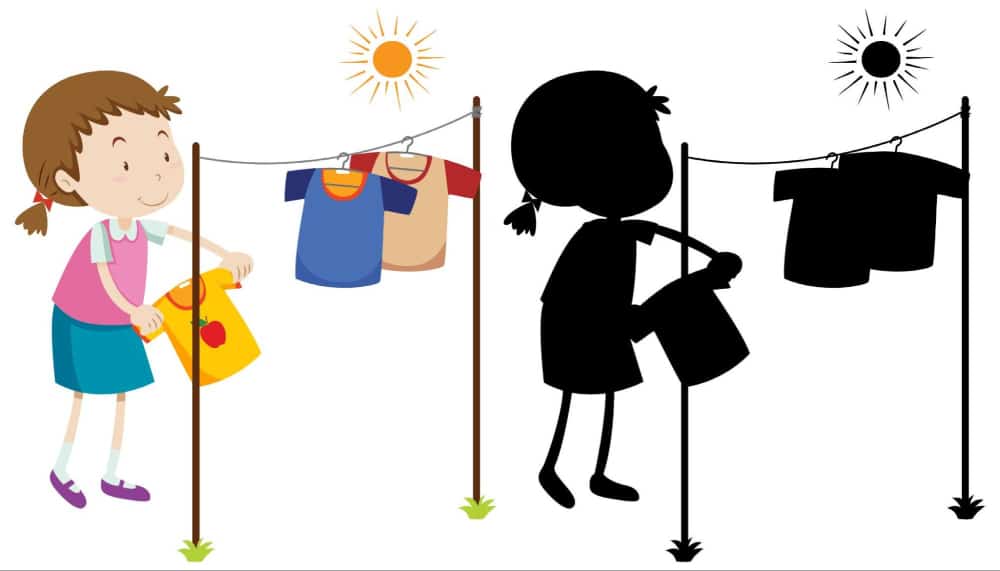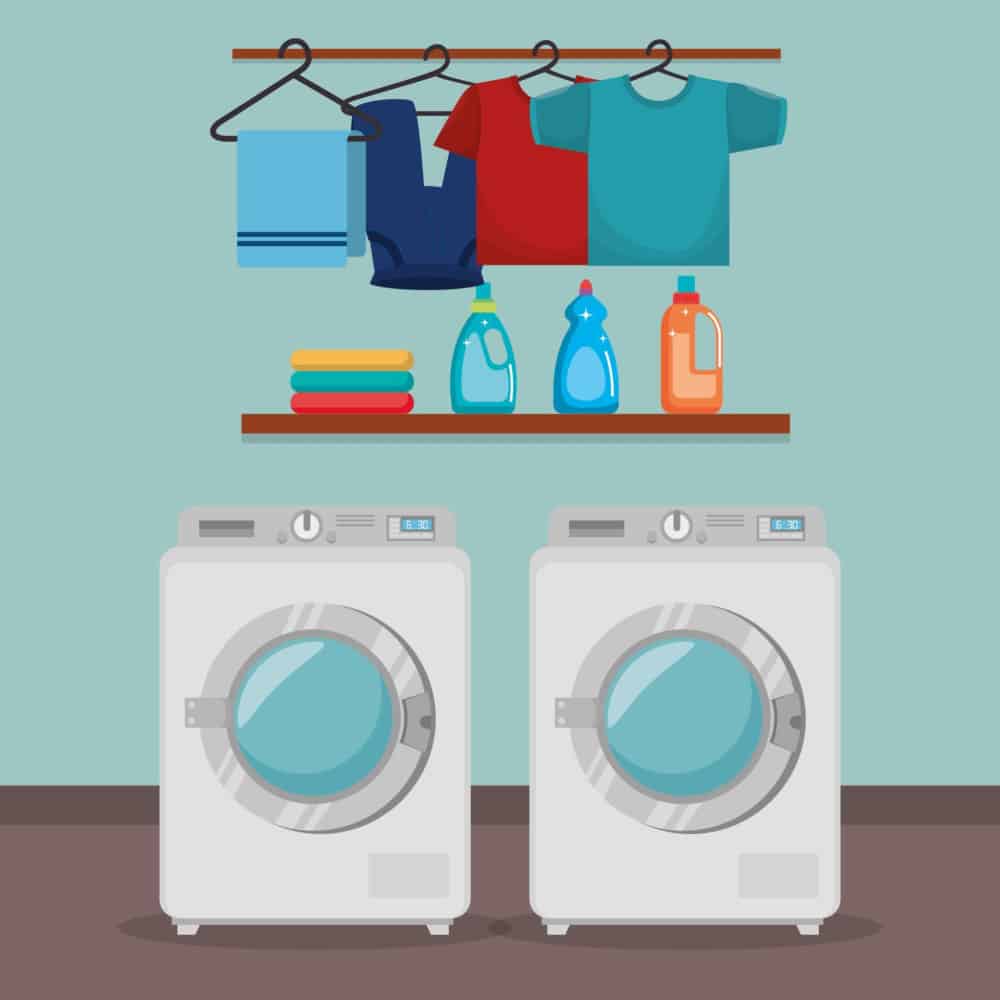When it comes to drying clothes, the method you choose plays a significant role in their longevity, appearance, and environmental impact. You’ve probably found yourself debating between line drying and tumble drying, wondering which is the best option for your clothes. While both methods serve the same purpose, they each come with their own benefits and drawbacks.
In this blog, we’ll explore both methods in detail, helping you make an informed decision based on your laundry needs. From energy efficiency to fabric care, let’s dive into the world of line drying vs tumble drying.
What is Line Dry?

Line dry refers to the process of hanging clothes on a clothesline or drying rack to dry naturally. This can be done outdoors, in direct sunlight, or indoors, depending on the weather. Line dry is often seen as a more traditional method of drying clothes, but it is also widely appreciated for its eco-friendly benefits.
Benefits of Line Drying
- Eco-Friendly: Line dry doesn’t require electricity, making it a sustainable option that reduces your carbon footprint.
- Fabric Preservation: Clothes dried on a line tend to last longer since they are not exposed to the heat and tumbling action of dryers.
- Softness: Many people notice that clothes dried naturally feel softer, particularly materials like cotton, linen, and wool.
Impact on Fabrics
When clothes are labeled as suitable for line drying, it usually means the fabric is delicate or prone to damage from heat or mechanical stress. Line drying is gentle on clothing, helping maintain their shape, prevent shrinkage, and preserve color. It’s especially beneficial for items such as wool sweaters or silk blouses, which require extra care.
For tips on how to handle stubborn stains before line drying, check out our blog on How to Remove Turmeric Stains from Your Clothes Safely.
What is Tumble Dry?

Tumble drying refers to using an electric or gas-powered dryer to remove moisture from clothes. The dryer drum uses heat and tumbling motion, making it a quick and convenient way to dry clothes, especially for large loads.
Benefits of Tumble Drying
- Convenience: Ideal for busy households, tumble drying saves time and effort. It’s especially useful when you need clothes ready quickly, like after a workout or for school uniforms.
- Weather-Proof: Unlike line drying, tumble drying is unaffected by weather, making it reliable even during rainy or cold seasons.
- Versatility: Modern dryers come with settings for various fabric types, ensuring proper care for your garments.
However, tumble drying has downsides. Overuse can lead to fabric damage, such as shrinking, fading, and fraying. It’s also energy-intensive, which impacts both your electricity bill and the environment.
Line Dry vs Tumble Dry: The Key Differences
1. Speed and Convenience
Tumble drying is undoubtedly faster, typically taking 30–60 minutes depending on the load size. This makes it a go-to option for busy households or when you need clothes ready in a pinch. Line drying, however, requires more patience, as it can take several hours or even an entire day. Factors like fabric type, weather, and humidity also influence drying times for line drying.
For example, during sunny summer days, clothes might dry within a few hours outdoors. In contrast, rainy or humid conditions can stretch the drying time to a full day or more, especially indoors.
2. Energy Consumption
Line drying is the clear winner in terms of energy efficiency. It requires no electricity and harnesses natural resources like sunlight and air to get the job done. Tumble drying, on the other hand, is energy-intensive, contributing to higher electricity bills over time. Even modern, energy-efficient dryers cannot match the eco-friendliness of line drying.
Switching to line drying, even for part of your laundry routine, can significantly reduce your carbon footprint. For those conscious of environmental impact, line drying is an excellent choice.
3. Effect on Fabric
Fabric care is another crucial factor to consider. Line drying is gentle on clothes, helping maintain their texture, color, and overall integrity. Delicate fabrics, like wool and silk, benefit greatly from the absence of heat and mechanical stress. This method also prevents issues like shrinkage, fading, or fabric thinning, extending the lifespan of your garments.
In contrast, tumble drying can be harsh on certain fabrics, especially if not used with proper settings. High heat and constant tumbling can weaken fibers over time, causing wear and tear. However, modern dryers with specific fabric care settings (like low heat or air-dry options) offer better protection for your garments.
One great way to ensure your clothes remain in top shape—whether you line dry or tumble dry—is to deal with stains effectively before washing. For instance, removing turmeric stains can be particularly challenging, but our guide on How to Remove Turmeric Stains from Your Clothes Safely provides practical tips to make this process easier.
Which Drying Method is Right for You?
Choosing between line drying and tumble drying depends on your priorities and lifestyle.
- If you value sustainability and fabric care, line dry is the best option.
- If convenience and speed are more important, tumble dry is the way to go.
- For delicate garments, line dry offers a gentler solution.
- If you’re short on space or live in a humid climate, tumble drying may be more practical.
Environmental Impact
The environmental impact of your drying choice is an important factor to consider. Tumble dryers are one of the largest energy consumers in households, contributing significantly to greenhouse gas emissions. Switching to line drying, even for a portion of your laundry, can reduce your energy consumption and help you live a more sustainable lifestyle.
Moreover, line drying outdoors has the added benefit of utilizing sunlight, which acts as a natural disinfectant. This is particularly useful for bedding and towels, which can harbor bacteria if not dried thoroughly.
If you are looking for more ways to make your laundry routine eco-friendly, explore sustainable detergents and cold-water washing methods, which pair well with line drying. Additionally, line drying can provide a natural, fresh smell to your clothes that no dryer sheet can replicate.
Practical Tips for Line Drying
- Use a sturdy clothesline or drying rack to avoid sagging.
- Shake out your clothes before hanging them to reduce wrinkles.
- Place heavier items like jeans and towels on the line’s ends for better balance.
- For indoor line drying, ensure proper ventilation to prevent mold or mildew.
- Use clothespins to secure items, especially on windy days.
Line drying also offers opportunities for creativity. For instance, you can arrange clothes by color or size, which not only makes the process enjoyable but also aids in sorting when folding. In certain cultures, line drying is seen as a community activity, fostering connections with neighbors who share laundry spaces.
Practical Tips for Tumble Drying
- Sort your laundry by fabric type to ensure even drying.
- Use dryer balls to reduce drying time and soften clothes naturally.
- Avoid overloading the dryer, as this reduces efficiency and increases drying time.
- Clean the lint filter after every cycle to maintain efficiency and safety.
- Choose lower heat settings for delicate fabrics to minimize the risk of damage.
Modern tumble dryers often come with energy-efficient settings. If you’re considering a new appliance, look for models with high energy ratings to balance convenience with environmental responsibility. Additionally, many dryers now include sensors that detect when clothes are dry, preventing over-drying and conserving energy.
The Cost Factor
Another key consideration is the cost associated with each method. Line drying is essentially free after the initial investment in a clothesline or drying rack. Tumble drying, however, adds to your monthly electricity bills. While modern energy-efficient dryers can help reduce costs, the cumulative expense over time can still be significant.
If you’re looking to cut household expenses, line drying can make a noticeable difference. Additionally, fewer repairs and maintenance needs for a clothesline compared to a dryer make it a cost-effective choice in the long run.
Final Thoughts
Both line drying and tumble drying have their pros and cons. Line drying is eco-friendly and gentle on fabrics, while tumble drying offers convenience and speed. Understanding these differences will help you choose the right drying method for your needs, ensuring your clothes remain in top condition for years to come.
Make laundry day simpler and more effective with our helpful tips and professional services!
Choosing the right drying method doesn’t just impact your clothes—it’s a lifestyle choice that reflects your values, priorities, and commitment to sustainability.
Ready to make a change in your laundry routine?
Whether you choose the eco-friendly benefits of line drying or the convenience of tumble drying, your choice can have a lasting impact on your clothes, your wallet, and the planet. Explore more practical tips, eco-friendly laundry alternatives, and expert advice to keep your clothes in top shape. Need help with laundry care or looking for more sustainable options? Reach out to us today to learn more and take your laundry game to the next level!



